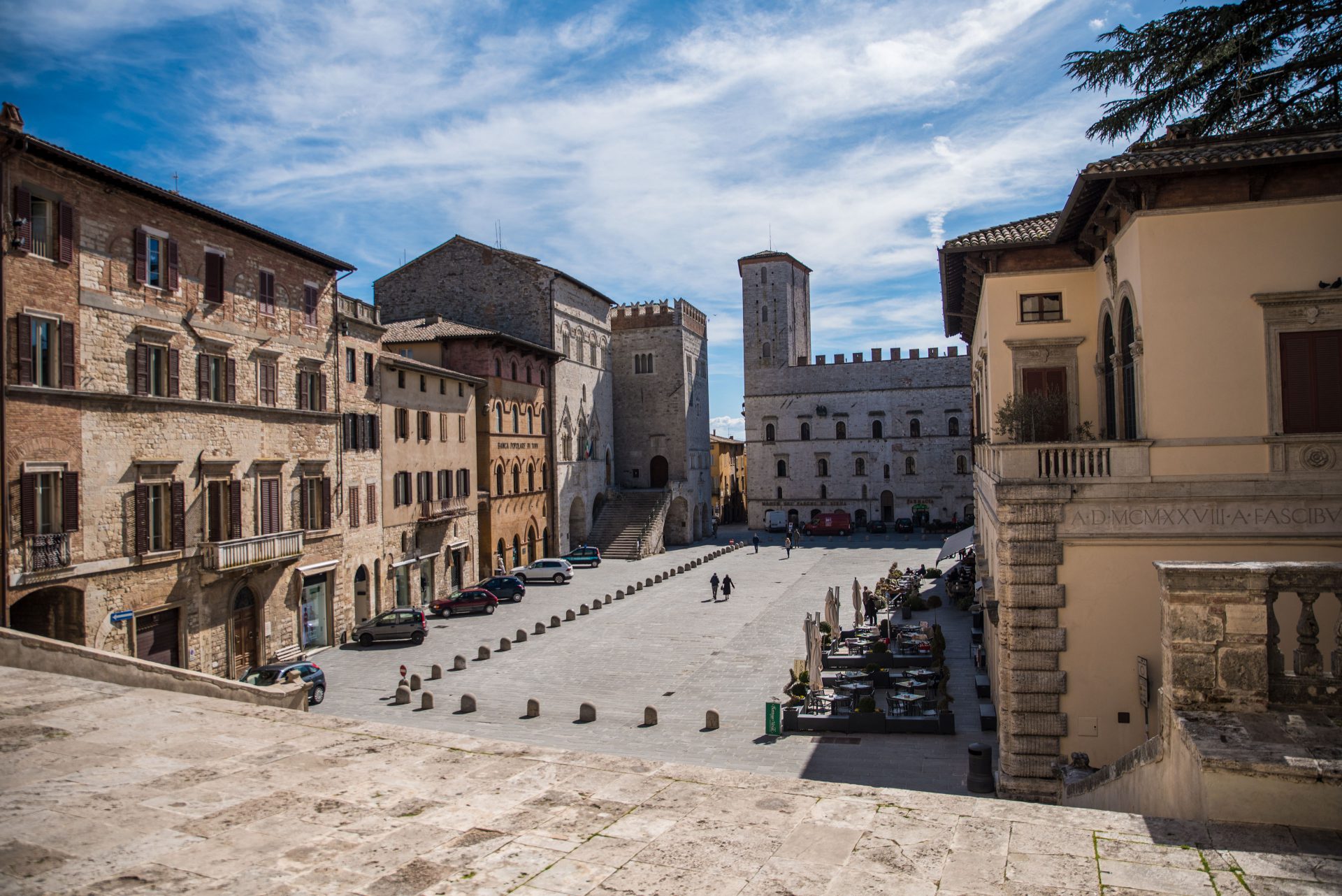Todi, also known as the city of Jacopone – after a friar and poet, now Sanctified – as well as for being defined by an American study as the “ideal city”, or rather “the most liveable city in the world”, is located in the heart of Umbria, and therefore in a strategic position to visit the entire region.Todi is so rich in artistic and natural sights that visiting it all in one day could be a real challenge.
Its beauty and its unique atmosphere will make anyone passing through, even if just briefly, fall in love. It is no coincidence that it is a favourite destination for artists, intellectuals and celebrities.
Essentially the city deserves at least an entire weekend, but if you only have one day to explore it, here are some of the things that you absolutely miss see.
ART AND MONUMENTS IN TODI
Let’s start from the main square, Piazza del Popolo, surrounded by the Duomo and Palazzo dei Priori, as well as the Buildings of the Town Hall.
Palazzo del Popolo and Palazzo del Capitano host the Museo Civico (Civic Museum), a place to visit for an enthralling look into the city’s history. Behind the Duomo, another must-see is Palazzo del Vignola, the church ‘Chiesa della Nunziatina’ embellished with frescoes, and the Palazzo Vescovile (the Bishop’s Palace) a true work of art and architecture that offers a stunning view of the town.
To really get to know Todi you need to go all the way to the top of the Bell Tower of the Church of San Fortunato – which is also worth visiting – for a breathtaking view of Piazza del Popolo and the surrounding area, and then you must go down under the main square to explore the Roman Cisterns through a fascinating underground route.
The Nido dell’Aquila (Eagle’s Nest) complex is another one of Todi’s symbolic sights, housing a small theatre, exhibition halls and a magnificent terrace that offers another stunning view of the city.
Remaining in the very heart of the town, one must enjoy a stroll in Piazza Garibaldi and take some pics of the amazing view it offers, with the impressive “Garibaldi cypress”, standing a full 36 metres tall, planted in 1849 by one of the townsmen to commemorate when the Hero Of The Two Worlds passed through – a visit that is also remembered by Anita’s saddle, displayed in the civic museum. Just ahead, in Corso Cavour. You will very quickly come across the Rua Fountain or Cesia Fountain: built in 1606 commissioned by Bishop Angelo Cesi to collect water coming from the highest point of the hill. It is distinguished by the eagle, the city’s symbol, and depicts a tree on a mountain, from the Cesi family’s coat of arms.
Close by are the beautiful Scannabecco Fountains facing the complex of the San Carlo or Sant’Ilario Church and Palazzo Pongelli: three monuments that embellish via Cesia, for an enjoyable and romantic stroll during the day, even more so in the evening.
Venturing a little ways out of the centre, but easy to walk to, you can visit the Church of Santa Maria della Consolazione, as famous as it is a must-see, designed by Bramante and a symbol of renaissance architecture.
ATTRACTIONS AND NATURE IN TODI
You haven’t truly visited Todi unless you have strolled through its narrow streets that climb or drop steeply uphill and downhill, take you over delightful stairs, through little archways, past cascading flowers, ancient stones and stunning views.
To relax outdoors you can go to the parco della Rocca (the Fortress Park) – an ancient fortress of historical and architectural relevance located at the topmost point of the city, in the very heart of the city – or the Oberdan Gardens, characteristic and romantic, including the view they offer, which is also stunning as always.
For summer visitors there is a large city swimming pool with waterpark in the Naia Bridge area to enjoy a dip and plenty of fun immersed in the countryside, and with the hill-town of Todi and its main monuments creating the perfect setting.
If you are more adventurous – although the sight is not particularly challenging to visit – you can book a guided tour of the Gallerie della Fabbrica della Piana, an underground route of tunnels, wells and steps, built in 1800 to reclaim this area affected by a large landslide.
The countryside around Todi is undoubtedly worth visiting, in fact the city limits include 37 hamlets, and every single one has something to see and tell, and the area as a whole is teeming with beautiful sights. Hills, both big and small, trails that take you along the Tiber river or bubbling streams, ancient castles, sun-soaked vineyards and delightful olive groves, small churches, hamlets and villages: even a relaxing drive through them is a feast for your eyes.











Follow us on the socials